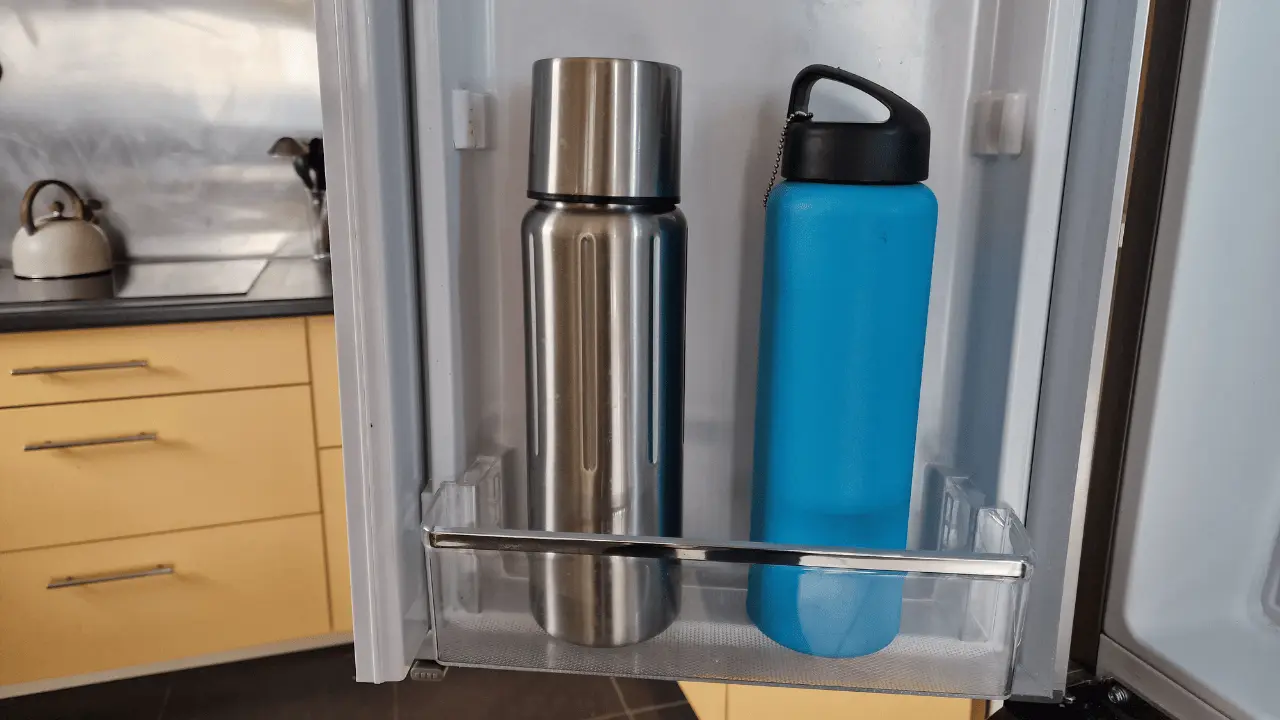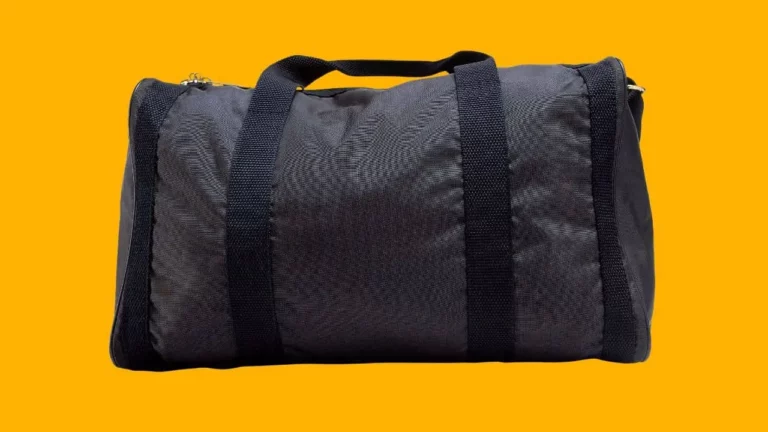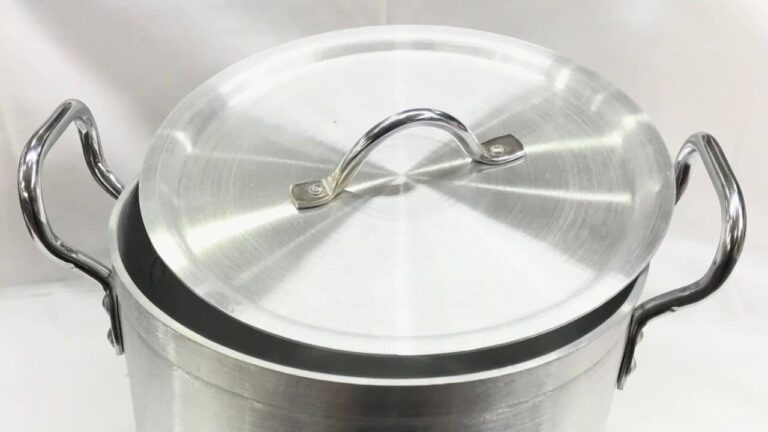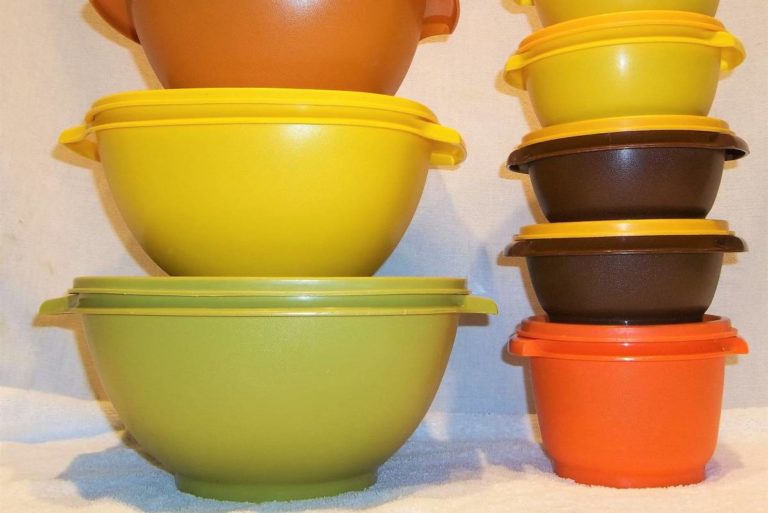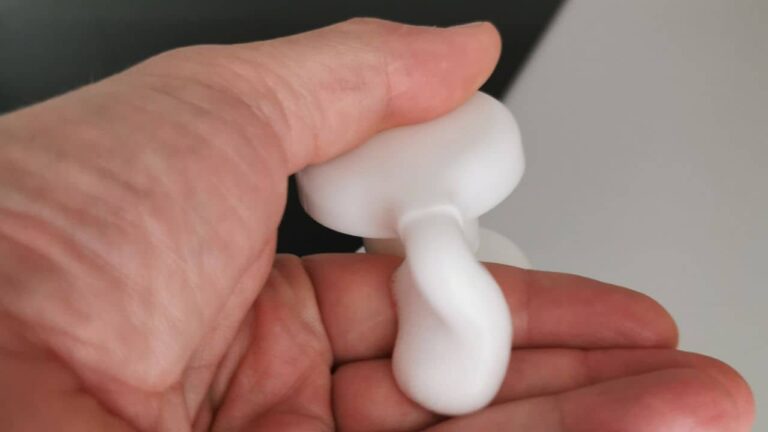Can You Really Put Insulated Bottles in the Fridge? (Solved & Explained)
Insulated bottles are highly effective in keeping drinks cool or warm for a long period. So, whether I prefer a hot or cold drink, I can always count on my insulated bottle to quench my thirst. That said, is it alright to put insulated bottles in the fridge?
Yes, you can put insulated bottles in the fridge, but it’s important to note that due to their design and insulating properties, the cooling process may be slower than expected. Insulated bottles are specifically designed to maintain the temperature of their contents for extended periods by minimizing heat transfer. While placing an insulated bottle in the fridge won’t damage the bottle, the cooling effect will likely be minimal compared to using a non-insulated container.
To accelerate the cooling process, you can remove the lid, which will allow heat to escape more rapidly. However, for faster results, it’s recommended to pour the contents into a non-insulated container before refrigerating or use other cooling methods like ice cubes or reusable ice packs.
In this guide, you’ll learn about things to note when storing your insulated bottles in the fridge. At the same time, you’ll also learn how insulated bottles work, as well as how to clean your bottles properly.
Without further ado, let’s get started!
Everything You Need to Know About Putting Insulated Bottles in the Fridge
When refrigerating your drink contained in an insulated bottle, the cooling process may be slow. This is because the insulated bottle’s structure is designed to trap the temperature of the liquid inside and prevent the external temperature from coming in.
That’s why the only way to get your drink to cool faster when storing it in the fridge is by removing the lid. Without the insulated bottle’s lid, cool air goes directly into the liquid.
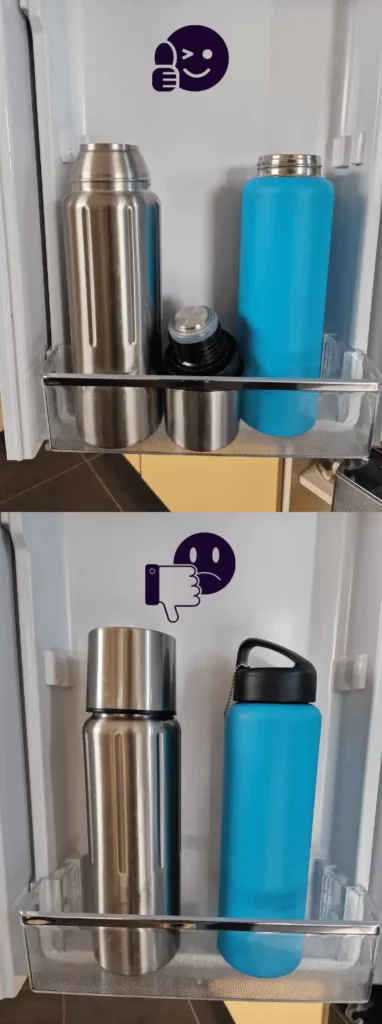
While there’s no problem with putting your insulated bottle in the fridge, it’s usually not recommended to store it in the freezer.
That said, putting an empty insulated bottle in the freezer is harmless (if not pointless). Meanwhile, putting insulated bottles containing water in the freezer may potentially damage the bottle. Here’s a little science behind it:
Since water expands as it freezes, it can potentially break the container as it expands, especially if the bottle is made of glass. As a result, the container breaks, and the vacuum that serves as the insulating mechanism is compromised too.
The same principle applies to bottles of beer or sodas that explode when left in the freezer.
How Do Insulated Bottles Work?
These days, insulated bottles are everybody’s go-to containers.
The versatility of insulated bottles is one thing that I love about them. I can store whatever drink I like and enjoy them fresh even after a long, tiring day.
With that, you’re probably wondering how insulated bottles can preserve the hotness or coldness of your drink when they don’t have a built-in heating or cooling element. So, to understand how they work, let’s examine their structure first.
What is an insulated bottle made of?
First, most insulated bottles are made using stainless steel flasks. This is because stainless steel is a lightweight and highly efficient thermal insulator.
That said, if you take a look at the internal structure of insulated bottles, you’ll find two flasks. To visualize, think of a flask within another flask—that gives you an inner and outer flask.
Moreover, the inner flask is double-walled. At the same time, the shiny walls of the inner flasks are silvered to prevent heat loss.
Secondly, the two flasks are joined and sealed at the neck of the bottle. At the same time, the space between the two flasks is evacuated, which means it’s devoid of air. This is also called a vacuum, and it’s the primary insulating mechanism of the bottle.
How do insulated bottles trap heat?
Since there’s no air in the gap between the flasks, heat cannot travel to and from the bottle. At the same time, it prevents the external temperature from influencing the temperature of the liquid inside.
Furthermore, the silver layer within the inner flask is another mechanism that enhances heat-trapping. The silver works by reflecting heat, thus not allowing it to escape the flask.
As a result, the temperature of the drink inside stays as is for a long time. It’s all thanks to vacuum and silver coating.
What Kinds of Drinks Can You Put in an Insulated Bottle and Store in the Fridge?
Water, carbonated drinks, coffee, and some juices are safe to load into your insulated flask. While you may think that your insulated bottles can hold almost anything, this isn’t always the case.
Interestingly, some liquids can potentially damage your insulated bottle. At the same time, the nature of some liquids may allow the propagation of harmful pathogens.
First, strong acids found in lemonades or other citrus drinks can corrode the inner lining of your stainless steel flask in the long run.
Moreover, putting milk in insulation bottles is unsafe and a major health risk. Milk kept in stainless steel bottles may eventually harbor harmful microorganisms. In like manner, the nutrients present in the milk may degrade.
Lastly, traditional medicines and teas aren’t recommended to store in insulated bottles since some of their properties might degrade and become toxic.
How to Clean Insulated Bottles Before and After Putting in the Fridge?
Cleaning your water bottle properly prevents bacteria from thriving. It decreases your chances of acquiring illnesses as well.
To properly clean your water bottle before and after putting it in the fridge, follow these simple steps:
- Pour a small amount of warm water into the bottle and add dishwashing soap.
- After that, shake the bottle for a few seconds.
- Next, use a gentle bottle brush to clean the insides of your bottle.
- Brush the thread on the mouth of the bottle (you may also use a clean sponge).
- Don’t forget to brush the external parts of the bottle as well, especially the lid. Germs are always likely to propagate in this part.
- Pour the soapy water and rinse your bottle until no more bubbles or scents of dishwashing soap are left.
- Allow your bottle to dry by hanging it upside down, uncapped. To add, using a clean paper towel may be helpful
Always note that cleaning your stainless insulated bottle must be done on a daily basis to avoid the propagation of germs. On the other hand, don’t clean your bottles in the dishwasher because the harsh cleaning process may damage them.
Furthermore, you may use water cleaning tablets or vinegar to clean your insulated bottle.
Conclusion
To summarize, placing your insulated bottle (even with a wide-mouth model) in the fridge is perfectly safe. However, you must avoid putting it in the freezer to avoid damaging your bottle.
Furthermore, avoid putting highly acidic drinks like lemonade on your insulated bottle to prevent corrosion. Milk, tea, and medicinal drinks should be avoided too.
Lastly, clean your bottle with soapy water and a cleaning brush daily to prevent the growth of germs. The lid and opening of your bottle are germ hotspots, so make sure to clean them off properly.
Source

